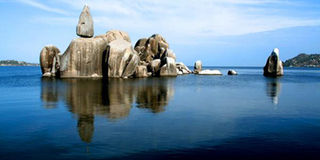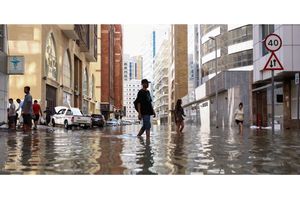Save lives of 35m lake Victoria basin people

What you need to know:
- Unlike in the 1980s and 1990s, when fishing boomed, fillets were exported to Europe, Asia and North America, 200,000 jobs were created and millions of Tanzanian families enjoyed high protein diets, the living is precarious.
- Small-scale fishermen are hit hard. They are ill-equipped to catch fish in deep waters as fishing in shallow waters near breeding sites is outlawed. It is a Hobson’s choice.
East African Community (EAC) member states increasingly appear to tilt at windmills as pollution, overfishing and ecological destruction are wreaking havoc on Lake Victoria, pushing 35 million people in Kenya, Tanzania and Uganda at the precipice of poverty.
Unlike in the 1980s and 1990s, when fishing boomed, fillets were exported to Europe, Asia and North America, 200,000 jobs were created and millions of Tanzanian families enjoyed high protein diets, the living is precarious.
Small-scale fishermen are hit hard. They are ill-equipped to catch fish in deep waters as fishing in shallow waters near breeding sites is outlawed. It is a Hobson’s choice.
Moreover, anglers complain that even if they were well-equipped to venture into deep waters of the lake, large-scale fishermen would have considered them intruders and attack them because they believe that is their turf.
It is surprising that it has taken so long to tackle the situation and instead the governments spent decades tinkering with peripheral matters, while environmentalists have umpteen times warned about the looming catastrophe.
Researchers criticise governments and national agencies for failing to control the effluent and waste that pours into the water body. Despite laws placed on the size of fish caught and methods of catching, they remain largely unregulated.
Sewage and industrial waste litter the lake bed. Blooms of algae are invading it, depleting the waters of oxygen and increasing poison levels for fish.
Marine scientists paint a gloomy picture of the lake, seeing it on the brink of death as some areas are deprived of oxygen.
The Lake Victoria Basin Commission (LVBC) recently admitted that the lake was facing serious threats.
Average weight of Nile perch caught fell by 40kg
The Food and Agriculture Organisation of the United Nations has reported that the average weight of Nile perch caught fell from 50kg in the 1980 to less than 10kg today in the lake that covers more than 68,800 square kilometres.
Last Wednesday, at a conference on environmental research and scientific approach, United Nations Environment Programme experts said human and animal drug wastes were largely finding their way into the lake and have devastating effects. They wondered why the growing problem was ignored as the human population was increasing.
While acknowledging LVBC’s efforts in promoting, facilitating and coordinating activities of different actors towards sustainable development and poverty eradication of the Lake Victoria Basin, we call on EAC members to save the lake from dying and the lives of 35 million people.
What should be done is for EAC partner states to monitor and improve sewerage treatment to reduce the amount of drugs that reach the lake.
Scientists should study the effects of some of these drugs in the ecosystem and design more environmentally-friendly drugs. Improper disposal of drugs, which are discharged into sinks or toilets and later drained into the lake, when patients fail to complete their prescriptions should be stopped.




